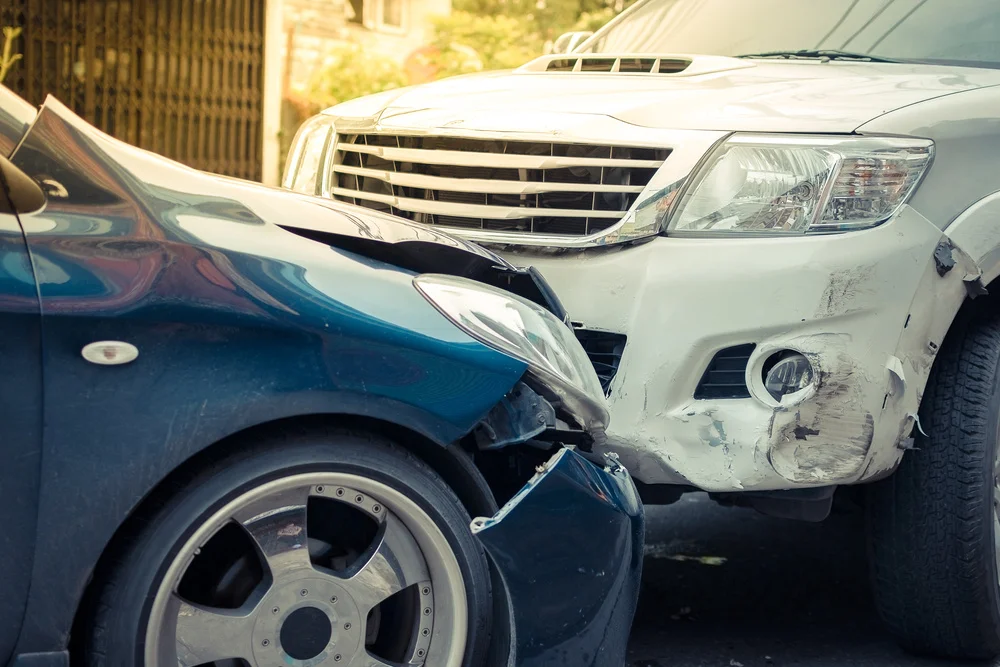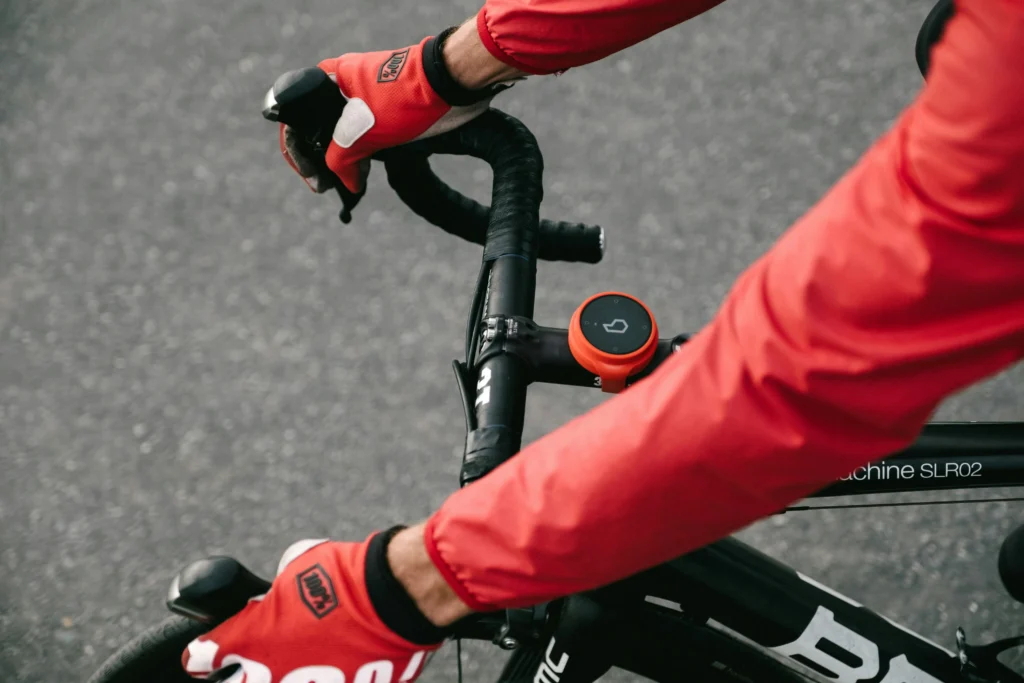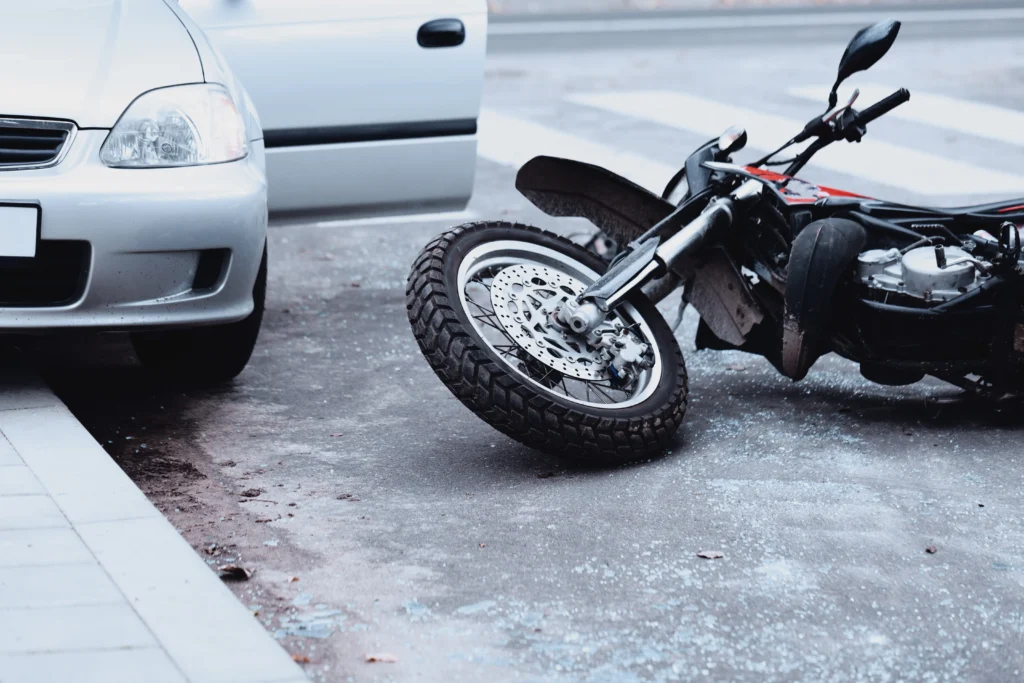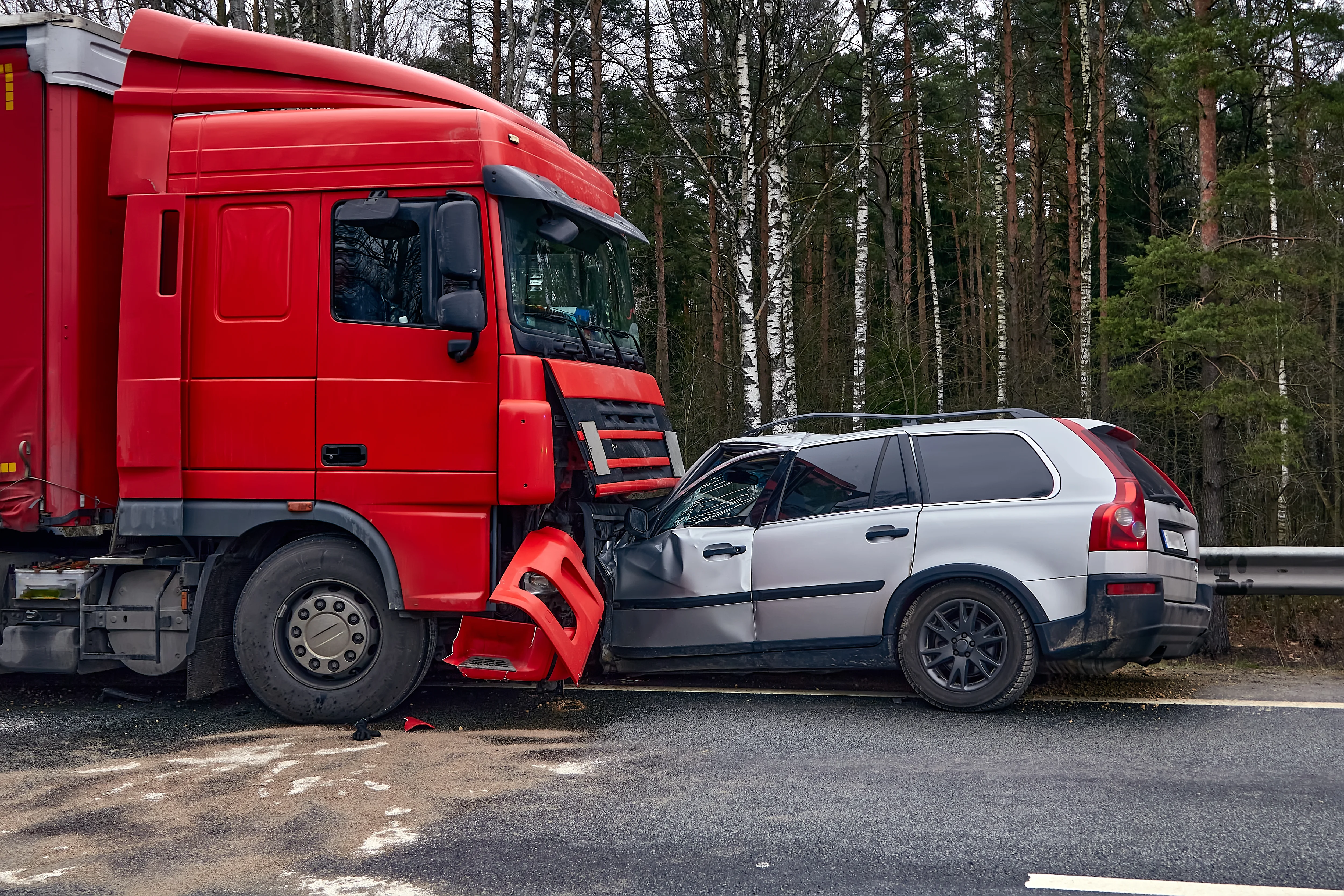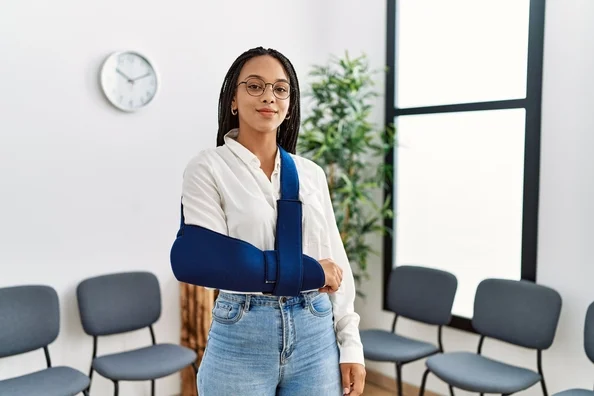Washington Bicycle Accident Lawyers Fighting for Injured Cyclists
A severe Washington bicycle accident can leave you out of a job, in the hospital, and facing a stack of hospital bills. A negligent driver might have hit you in front of Green Lake Park in Seattle, Ruston Way in Tacoma, or Hamilton Street Bridge in Spokane, and you need immediate legal assistance, not tomorrow. Our lawyers at Bernard Law Group represent cyclists statewide and help them get compensation fast and hold drivers accountable for their carelessness.
Bicycle crash collisions are increasing statewide. Hundreds of bicyclists are hurt every year in traffic crashes caused by drivers who ignore right-of-way rules or fail to yield, Washington Traffic Safety Commission data show. These are not “accidents”, they are preventable crashes caused by unsafe choices. Our law firm moves fast to preserve video evidence, interview witnesses, and build your injury case before evidence is destroyed.
We don’t just wait around for the insurance firm to move. We take the battle to them. Get a free case review today by calling (206) 752-2233 and receive legal advice from a firm that handles serious bicycle collision cases all over Washington.
Our Washington Bicycle Accident Lawyers Handle Cases from Seattle to Spokane and Every County In Between
Bicycle crashes are not confined to one type of street or city. Riders suffer injuries on downtown boulevards, two-lane rural highways, and residential intersections statewide. At Bernard Law Group, we represent cyclists hurt in collisions throughout Washington. Whether the crash happened in Rainier Valley, South Tacoma, or a remote stretch of SR-20, we move immediately to secure footage, preserve scene conditions, and file injury claims that withstand legal pressure.
The faster we begin, the stronger your case becomes. Drivers often claim they never saw the cyclist. City planners deny responsibility for missing signage or poor lighting. But we uncover the truth, document violations, and force accountability. We handle every part of the process so our clients can focus on healing.
Bicycle Accidents in Seattle Often Involve Aggressive Driving and Bad Infrastructure
Seattle’s roads combine dense traffic with inconsistent bike lane design. Popular streets like Pine Street, Dexter Avenue, and Rainier Avenue place cyclists beside buses, box trucks, and impatient drivers. When traffic funnels into narrow corridors or bike lanes end without warning, collisions follow.
We take on cases from Seattle neighborhoods where crashes are frequent. Cyclists hit in Ballard, Beacon Hill, Northgate, and Capitol Hill often face uphill battles against insurers who question liability. We respond with witness statements, medical records, and time-stamped footage. According to Harborview Medical Center, trauma cases involving cyclists remain one of the most serious types of injury admitted through emergency care.
Many Seattle Bicycle Injuries Occur at Intersections and Driveway Crossings
Left-turn crashes and right-hook impacts at intersections make up a large portion of Seattle’s bike collisions. Drivers fail to yield or rush turns without checking for cyclists with the right-of-way. We document these errors using Seattle Department of Transportation data and vehicle event recorders when available.
Even driveway exits present risk. Delivery vans and rideshare vehicles pulling out of garages or parking lots often ignore sidewalk-level bike lanes. These incidents typically result in fractured wrists, shoulder damage, or concussions. Our team moves fast to secure video from nearby businesses and cross-reference it with client injuries and bike impact angles.
Seattle’s Topography Makes Some Routes More Dangerous for Cyclists
Hills like those on Madison Street or Yesler Way increase downhill speed. When bike lanes disappear mid-block or force riders into shared traffic lanes, the chance of injury rises. These conditions combine with limited visibility to create crashes that are blamed on cyclists unless thoroughly investigated.
Our attorneys rebuild the scene with photos, road specs, and GPS path data from your ride. We show exactly where and how the crash occurred, making your claim difficult for insurance carriers to deny.
Bicycle Injury Claims in Tacoma Require Quick Evidence Collection
Tacoma cyclists face a unique mix of road conditions. Port traffic, narrow arterial routes, and aging intersections all raise the risk of a serious bicycle crash. Pacific Avenue, Portland Avenue East, and Center Street continue to be high-risk corridors. Many riders suffer injuries while navigating broken pavement or unprotected intersections.
We handle bicycle crashes from Hilltop and Lincoln District to North End and Central Tacoma. Some of our most urgent cases involve delivery vehicles turning across bike lanes, city buses merging without clearance, and drivers opening car doors into moving cyclists. We act before cleanup crews erase tire markings or surveillance footage expires.
Many Tacoma Bicycle Crashes Involve Freight and Commercial Vehicles
Port-related truck traffic creates a deadly mix when cyclists ride near commercial freight routes. Roads like Milwaukee Way and Marine View Drive see high volumes of container haulers and wide-turning semis. One blind corner or improper merge can change a rider’s life in seconds.
According to the Washington Department of Labor & Industries, many commercial vehicle operators in port zones receive limited traffic training related to cyclists. We use this data to challenge negligent freight companies and investigate past citations linked to driver conduct. When possible, we pursue corporate liability for training failures and pattern violations.
Poor Maintenance Plays a Major Role in Tacoma Bike Wrecks
Potholes, cracked sidewalks, and faded bike lane markings all contribute to bike crashes. The City of Tacoma’s aging infrastructure places riders at constant risk. If poor road conditions contributed to your crash, we preserve those defects before they’re patched over.
Photos, witness accounts, and timestamped city maintenance reports support claims for negligence. Our team routinely investigates the city’s response time and enforcement history to prove liability in premises-related injury cases.
Rural Bicycle Crashes in Washington Cause Severe Injuries Without Warning
Outside city centers, Washington cyclists ride along scenic routes with little to no protection. Collisions on highways like SR-9, SR-14, or SR-155 often involve high-speed impacts that result in catastrophic injuries. Riders struck outside Wenatchee, Ellensburg, or Pullman rarely have nearby surveillance or witnesses. That makes early legal intervention critical.
We investigate crashes on remote roads with the same urgency as city claims. GPS data, debris trails, and emergency response logs help us rebuild the crash narrative. According to the National Highway Traffic Safety Administration, rural bike crashes tend to involve higher fatality rates due to driver speed and longer EMS response times.
Lack of Marked Bike Lanes Creates Deadly Conditions for Rural Cyclists
County-maintained roadways often include unmarked shoulders or narrow curves. These routes offer no buffer for cyclists. When a driver veers off line, fails to see the cyclist, or attempts a reckless pass, the outcome can be devastating.
We show how road design and driver behavior intersect to cause these injuries. If a county failed to install signage, maintain edge lines, or implement speed reductions on high-risk bike corridors, we include those violations in the claim. We do not let government agencies dodge responsibility when infrastructure plays a role in a serious bicycle crash.
Long-Term Injury Claims After Rural Bicycle Collisions Require Detail
Injured cyclists hit on rural roads often face extended rehabilitation, surgeries, and income loss. These crashes tend to involve pelvic fractures, spinal trauma, and traumatic brain injuries. Our team includes not just your current bills but the full scope of your medical future.
We build every demand package with projections from life care planners and wage loss reports. We also link these damages to the crash’s unique mechanics and site-specific hazards. This increases settlement leverage and forces insurers to take full financial responsibility.
Call (206) 752-2233 to speak with our Washington bicycle accident attorneys today. Whether your crash happened in the city or along a rural corridor, our firm takes immediate steps to protect your claim and push back against delay tactics. We offer free case reviews and take no fees unless we win.
Dangerous Intersections Where Washington Cyclists Get Hit Most Often
Not all intersections in Washington are designed with cyclists in mind. Some lack designated bike lanes. Others include wide turns, poor signage, or signal timing that prioritizes vehicles over rider safety. At Bernard Law Group, we investigate crashes at these high-risk intersections and push for full compensation when cyclists are injured by preventable road conditions or driver mistakes.
Across Seattle, Spokane, Tacoma, and smaller cities like Bellingham and Walla Walla, certain intersections routinely generate serious bicycle accidents. Statewide data from the Washington State Traffic Safety Commission confirms that urban crossings are a common source of collisions involving cyclists and vehicles. Our attorneys use that data, along with client injury records and city planning documents, to build strong legal claims.
Intersections in Seattle Where Bicycle Accidents Occur Regularly
Cyclists crossing intersections like Rainier Avenue South and MLK Jr. Way often face multiple hazards at once. Drivers run lights, fail to yield on left turns, or swerve into bike lanes during traffic congestion. Poorly timed signals or obstructed signage further reduce a cyclist’s reaction time.
We’ve handled bike crash cases in Fremont, Capitol Hill, and South Lake Union, areas where bike infrastructure overlaps with heavy rideshare and delivery traffic. According to SDOT crash records, a majority of injury-causing collisions in Seattle occur within five blocks of high-volume intersections.
Blind Corners and Poor Signal Timing Amplify Risk
At intersections like 12th Avenue and Yesler Way, bike riders often contend with blind corners caused by bus shelters, utility poles, or illegally parked cars. Even when cyclists ride lawfully in the designated bike lane, their visibility to turning drivers is severely limited.
We analyze signal timing, driver turning behavior, and intersection geometry. We also preserve footage from city traffic cameras and subpoena nearby business surveillance to document fault.
Crash Data Supports Aggressive Legal Action
Public records and King County Open Data help us identify repeat-collision zones. This documentation shows that many intersections involved in our clients’ cases have a history of preventable bicycle crashes. That evidence strengthens claims and increases pressure on insurers to settle.
Bicycle Collisions in Tacoma Occur at Industrial and Retail Intersections
Tacoma intersections along Pacific Avenue, Portland Avenue, and East 26th Street see frequent bicycle collisions. Many riders are hit while crossing industrial side streets or maneuvering through high-traffic commercial zones where drivers make abrupt turns into parking lots or side alleys.
Even intersections near the Tacoma Dome or University of Washington Tacoma campus have insufficient signage or outdated traffic controls. We investigate how city layout and driver behavior converge to injure cyclists. Our team examines road curvature, crosswalk placement, and bike lane taper zones to show how municipal design contributed to the crash.
Left-Hand Turn Risks at Major Corridors
Riders heading straight through signalized intersections are often struck by drivers turning left across the bike lane. These “left cross” collisions are among the most dangerous for cyclists, often leading to pelvic fractures, spine injuries, or traumatic brain trauma.
We counter driver excuses with timing logs, dashcam footage, and crosswalk phase analysis. When needed, we retain accident reconstruction specialists to illustrate that the cyclist had legal right-of-way.
Many Crashes Involve Commercial Vehicles With Poor Sightlines
Amazon vans, freight trucks, and regional service vehicles regularly operate near Port of Tacoma and I-705 access routes. These vehicles often turn sharply at intersections without seeing cyclists. We use corporate trip logs and telematics data to prove when and how drivers failed to observe bike lane occupancy.
Spokane Bicycle Accidents at Crossroads Without Clear Lane Separation
In Spokane, collisions involving cyclists frequently occur at intersections where no designated bike infrastructure exists. Riders on North Division Street, East Sprague Avenue, and Maple Street Bridge face lane confusion, narrow shoulders, and high-speed vehicle turns. When those design flaws lead to injury, we document every failed protective measure.
Outdated Signals and Poor Striping Are Common in Spokane Intersections
Many of Spokane’s intersections still lack modern signal infrastructure, countdown indicators, or sufficient bike lane striping. We gather engineering reports and city traffic audits to show how these conditions place cyclists at risk. In past cases, we’ve used municipal records to prove long-standing hazards were ignored until a crash forced attention.
Bike Collisions Near Schools and Downtown Zones
Cyclists near Gonzaga University or Riverfront Park often encounter drivers rushing to beat lights or maneuvering aggressively during rush hour. These mixed-use intersections place riders in conflict with commuters and ride-share drivers. When crosswalk timing or road narrowing causes injury, we hold the responsible parties financially accountable.
Bernard Law Group actively investigates dangerous intersections across Washington that contribute to serious bicycle crashes. We use state traffic data, local camera footage, and intersection design plans to prove what went wrong, and why the driver or city failed to protect you. Call (206) 752-2233 now to speak directly with a Washington bicycle accident lawyer about your crash.
Bicycle Crash Hotspots in Bellingham, Vancouver and Smaller Washington Cities
Cyclists in Washington’s mid-sized cities face the same level of danger as those riding in Seattle or Spokane, just with fewer protected bike lanes and less responsive infrastructure. At Bernard Law Group, we represent injured cyclists statewide, and we’ve identified key intersections in cities like Bellingham, Vancouver, Olympia, and Yakima where bike crashes happen again and again. These are not isolated cases. They reflect structural failures by municipalities and careless behavior by drivers who disregard the rights of cyclists on Washington roads.
We investigate each crash with urgency. That means gathering local law enforcement reports, city maintenance records, and crash analytics. Then we build fact-driven claims that demand full compensation and long-term accountability. If you were hit in a smaller Washington city, your injuries and your claim are just as serious. We pursue them with the same focus and local knowledge that has helped us recover millions for crash victims across the state.
Bellingham Bike Crash Intersections Near Commercial and Campus Corridors
Bellingham’s most dangerous intersections for cyclists are clustered around downtown access points and roads leading toward Western Washington University. These include Lakeway Drive, Ellis Street, Samish Way, and the merging zones near I-5 ramps. Most of these roads lack consistent bike markings and suffer from poor lane definition, especially near intersections.
Cyclists Get Hit on East Holly Street Near Railroad Avenue
At the downtown convergence of East Holly Street and Railroad Avenue, bike riders face multi-lane vehicle turns, confusing lane drops, and speeding through traffic. Local businesses, bus stops, and diagonal street parking leave little room for safe cycling. We’ve documented cases where cyclists are sideswiped while riding lawfully in the far-right travel lane due to the absence of marked bike lanes.
Poor Drainage and Utility Obstructions Increase Crash Risk
In Bellingham, intersections like Garden Street and Chestnut Street often feature storm drain depressions, unmaintained pavement, and protruding utility boxes. These create sudden hazards for riders, particularly in wet conditions. When these road features aren’t corrected in a timely manner, the city may share liability for your injuries. Our attorneys build claims that incorporate prior maintenance complaints, street layout diagrams, and visibility reports from engineering consultants.
Railroad Crossings in Fairhaven Create Unstable Riding Conditions
Riders traveling south through Fairhaven often cross active rail lines with rough transitions, misaligned track gaps, or poor signage. At streets like 6th Street and Harris Avenue, cyclists are thrown off balance or caught in tire-grabbing ruts. We investigate these crossing designs using state safety audit documents and prior incident logs, which often reveal years of overlooked hazards.
Dangerous Intersections for Cyclists in Vancouver Washington
In Vancouver, aging infrastructure and fast-moving commuter traffic combine to create high-risk intersections for cyclists. Unlike Seattle or Bellevue, many streets in Vancouver were never restructured to include bike lanes or traffic calming features. That leaves cyclists exposed on arterials with little margin for error.
Mill Plain Boulevard Has a Pattern of Bicycle Injury Crashes
Intersections along Mill Plain Boulevard, especially near Grand Boulevard and Andresen Road, see frequent bike-versus-vehicle collisions. Drivers turning left across busy lanes often fail to check for cyclists moving eastbound. The area’s wide cross-sections and sparse lane striping encourage vehicle speed and reduce driver attention.
High-Traffic Intersections Lack Adequate Signage and Visibility
Vancouver’s Broadway corridor near Evergreen Boulevard funnels drivers, buses, and bikes through intersections with poor line-of-sight. Trees, outdated signs, and abrupt elevation changes make it hard for drivers to detect a cyclist’s movement across the intersection. Our firm routinely gathers dashcam video, witness statements, and road width data to show exactly why these crossings create preventable danger.
Dangerous Bus Interactions on Fourth Plain Boulevard
Along Fourth Plain Boulevard, bus lanes cut directly through cycling routes. C-Tran stops frequently block bike lanes, and riders are often forced into traffic while avoiding merging buses. We secure footage from on-board transit cameras and nearby business surveillance to confirm bus maneuvers and cyclist positioning.
Olympia Bicycle Accidents Involving Unmarked Intersections
Olympia may promote itself as a bike-friendly city, but many of its intersections still fail to meet safety standards for multi-modal use. Riders often get struck at crossings with no bike markings or signals that prioritize vehicle flow over non-motorist safety. The result is a repeated pattern of “right hook” and “left cross” collisions at intersections near the Capitol campus and the downtown core.
Capitol Way and Union Avenue Remain High-Risk for Cyclists
Capitol Way and Union Avenue see heavy government traffic, commuting cyclists, and unpredictable vehicle turns. These roads narrow suddenly and include angled curb cuts that make it difficult for cyclists to maintain visibility while entering the intersection. We collect municipal crash data and survey prior incident reports to show when the city failed to respond to long-standing visibility problems.
Intersections Near Olympia Farmers Market and the Waterfront Trail
East Bay Drive and Marine Drive connect bike trails to waterfront parks and the Olympia Farmers Market. These high-traffic zones frequently lack clear right-of-way indicators. We’ve handled cases where cyclists were hit while crossing legally but had no protective bike signals or yield signage. Our legal team inspects crosswalk geometry, signal timing, and prior maintenance records to hold the city and driver accountable.
Improper Road Transitions on Deschutes Parkway
Deschutes Parkway lacks defined separation between motor vehicles and cyclists. At points near Tumwater Falls and Capitol Lake, shoulder drop-offs and inconsistent lane edges create collision hazards. We retain roadway engineers to illustrate how outdated road transitions violate best practices for bike-safe design.
Yakima Cyclist Injuries at Poorly Regulated Intersections
Yakima intersections pose unique risks due to wide urban corridors, low visibility cross-streets, and limited citywide investment in designated bike infrastructure. Unlike coastal cities, Yakima roads often blend freight traffic with commuter vehicles in the same lane space as cyclists, without warning signs or pavement markings to protect vulnerable road users.
Crashes Occur Often Along North First Street and Fruitvale Boulevard
Bicyclists traveling along North First Street and Fruitvale Boulevard are frequently injured when vehicles make unannounced right turns or cross intersections without signaling. The lack of bike markings and ambiguous curb lane designation create confusion about who has the right-of-way. We build our cases using Yakima Police Department collision reports and roadway use statistics from WSDOT.
Narrow Intersections Around Eisenhower High School and Tieton Drive
School zones and residential intersections near Eisenhower High School see significant morning and afternoon congestion. Cyclists are often forced into narrow lanes without any dedicated bike route. When drivers pass too close or turn without checking blind spots, the resulting crashes leave riders with orthopedic and head injuries. We document school zone signage, driver speed history, and intersection signal programming to show where and how the city failed to maintain safety.
Unmarked Crosswalks Near Downtown Yakima Create Exposure
Downtown intersections near Yakima Avenue often feature faded or missing crosswalk lines, especially at uncontrolled four-way intersections. Cyclists attempting to cross these roads face unpredictable traffic behavior and no dedicated path. In these cases, we partner with municipal code experts to argue for shared liability between the city and the driver who caused the crash.
Speak with a Washington Bicycle Accident Lawyer Before Crucial Evidence Disappears
If a dangerous intersection played a role in your crash, your case needs immediate action. Skid marks fade. Video gets erased. Witnesses leave town. At Bernard Law Group, we move fast to secure traffic camera footage, city engineering records, and driver testimony before they vanish. Our attorneys know where Washington cyclists get hit most often, and how to prove city layout, poor signage, or negligent driving caused it.
You do not have to wait. We serve riders injured in Seattle, Spokane, Tacoma, Bellingham, Vancouver, Olympia, Yakima, and every smaller city in between. We prepare every case with the same urgency, whether the crash happened near a waterfront trail or a freight corridor intersection.
Call (206) 752-2233 or contact us online to speak directly with a Washington bicycle accident lawyer. There are no upfront fees. We only get paid if we win your case. Let us fight for every dollar you deserve.
Practice Areas
Trust Us With Your Personal Injury Claim
If you or a loved one have been injured, Bernard Law Group will fight for you every step of the way. We will give our all to secure the compensation you rightfully deserve.
Contact usfor a free consultation.
Phone: (206) 312-3908

